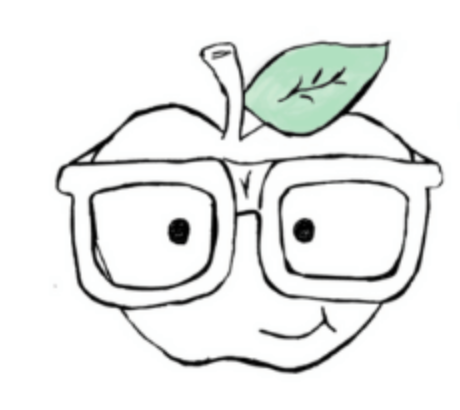
Tennis Elbow: Have You Treated Your Neck?
If you've had Tennis Elbow, you'll understand the deep frustration. The pain is stubborn, persistent, and often lingers despite your best efforts with braces, rest, and elbow-focused treatments.
But what if the real problem isn't in your elbow at all?
From my clinical experience, a critical piece of the puzzle is often missed - one that could explain why this happened to you in the first place, and why it's stalled. For many, the true source of Tennis Elbow lies not at the elbow, but in the neck.
This connection is significant enough that it could hold the key to a lasting solution. Let's explore why your Tennis Elbow might actually be a consequence of neck dysfunction.
What is Tennis Elbow? (Lateral Epicondylitis)
Tennis Elbow, known medically as Lateral Epicondylitis, is an overuse injury affecting the tendons on the outside (lateral part) of your elbow. These tendons connect your forearm muscles to your elbow bone.
Despite the name implying inflammation (-itis), the condition often involves tendon degeneration without active inflammation. It's one of the most common causes of elbow pain, and interestingly, more than 90% of cases occur in people who don't play tennis.
The Traditional View: What's Believed to Cause Tennis Elbow?
Conventionally, Tennis Elbow is linked to activities that require repetitive gripping and twisting of the forearm.
High-risk activities and professions often include:
- Bricklaying and tiling
- Working a cash register
- Overhand carrying
- Using plumbing or carpentry tools
This has led to its classification as an "overuse" injury. The theory is that load plus high repetition leads to tendon dysfunction.
However, I also see a large number of office workers with Tennis Elbow. They are exposed to repetitive movements (like typing and using a mouse), but without the heavy load.
And this highlights one simple question. If moving and using your tissue is normal, why can it become sore, injured, or dysfunctional through movement and use?
And this is precisely where the neck might become a major player.
The Missing Link: Does the Neck Cause Tennis Elbow?
This might sound strange, but clinically, the evidence is compelling. It appears that to develop persistent Tennis Elbow, you may first need to have accrued some mechanical dysfunction at the base of your neck.
This isn't necessarily a dramatic issue like a pinched nerve or disc bulge. More often, it's subtle stiffness and soft tissue tightness in the lower cervical spine that you might not even notice - unless you go looking for it.
And to tie all of this together, it's likely the presence of this hidden neck dysfunction that we take into repetitive activities that sets the tone for elbow dysfunction. Remember, repetition and use is normal. But they can be very good at exposing hidden mechanical issues you've taken into those moments.
How the Neck Causes Tennis Elbow: The "Kinked Hose" Analogy
The lateral elbow is connected to your neck through two primary pathways. Think of them like a garden hose supplying water to your arm and hand.
1. Dermatomes and Myotomes
These are specific areas of skin and muscle controlled by nerves from particular levels of your spinal cord. The base of your neck houses the neurological connections that serve the lateral elbow and forearm.
When there is stiffness and tightness at this "base," it can act like a metaphorical kink in a hose. Just as a kink reduces water pressure downstream, neck dysfunction can short-circuit normal function at your elbow.
This can lead to functional changes like relative weakness, dramatically reducing the elbow tendons' ability to tolerate normal, everyday loading over time.
2. The Radial Nerve
The radial nerve originates from the base of your neck and the top of your upper back. It travels down the back of your arm and passes directly by the outside of your elbow before continuing to your thumb.
Our nervous system doesn't have much inherent "slack." If there's a mechanical restriction at its origin in the neck, the nerve can't glide freely. This creates increased neural tension, making the entire pathway - including your elbow - more vulnerable to irritation and dysfunction.
In short, your body is designed to thrive with use. Repetition alone shouldn't cause a breakdown. But if the "hose" supplying your tissue is kinked at the neck, the elbow's threshold for dysfunction may reduce, often without you realising it until pain appears.
The Best Treatment for Tennis Elbow: Don't Forget the Neck!
If you are a long-term sufferer and have tried anti-inflammatories, injections, braces, and strengthening exercises without success, addressing your neck could be the missing piece.
Consider your daily habits:
- Do you constantly look down at your phone or laptop?
- Do you have a slouching posture at your desk?
- Do you sit in a recliner and watch TV between your feet?
Postures and positions like these place sustained stress on the base of your neck. By treating patients' neck dysfunction, I often see immediate improvements in elbow pain, strength, and overall function. It's the closest thing to a cure I've found in clinical practice.
It is, of course, unlikely to cure someone who has developed genuine tendon changes over time, but the bigger picture has become clear.
Fix the neck and the elbow follows.
A Simple Exercise to Start With: Lacrosse Ball Neck Release
This exercise helps mobilise stiff tissues at the base of your neck.

Instructions:
- Lie on your back on the floor with your knees bent.
- Place a lacrosse ball or tennis ball at the base of your skull and upper neck.
- Rotate your head slightly so the ball gently presses in just to the side of the bumps down the middle.
- Spend 1-2 minutes letting the ball press in, focusing on any stiff or tender spots. You might even feel a sensation refer to your elbow.
- Then go hunting above or below - and on the other side, to look for signs of stiffness, tightness or restricted tissue.
If you are unsure or have a history of neck injury, please consult a trusted health professional before trying this.
Other Effective Tennis Elbow Treatments
While addressing the neck is crucial, a comprehensive approach is best. Other proven treatments include:
- Physiotherapy: A therapist can teach you specific exercises to strengthen forearm and neck muscles and improve mobility.
- Bracing: A forearm strap brace can help reduce stress on the injured tendon during activities. Just know this will only ever be a short-term aid, NOT a long-term fix.
- Shockwave Therapy: Sends sound waves to the injured area to stimulate the body's healing process.
- Platelet-Rich Plasma (PRP) Injections: An injection of your own concentrated platelets to encourage tendon healing.
Frequently Asked Questions About Tennis Elbow
Recovery time varies widely. Many low-grade cases improve within 4-6 weeks with proper management. More involved cases can take 3-6 months or longer, especially if underlying neck stiffness is not addressed.
Surgery is a last resort for symptoms that haven't improved after 6 to 12 months of conservative treatment. It involves removing damaged tissue from the tendon. If considering surgery, it's wise to get a second opinion to ensure all contributing factors, like neck dysfunction, have been explored.
From my clinical experience, heat is often more beneficial as it can help loosen tight tissues and calm the nervous system. Ice may be used for short-term pain relief, but some evidence suggests it can potentially delay the natural healing process and should be used sparingly.
Absolutely. In fact, it's more common in non-athletes. Those at highest risk are people in jobs with repetitive arm motions, such as bricklayers, tilers, office workers, and cashiers.
Game, Set, Match: The Final Word
If you're dealing with Tennis Elbow, please respect the health and function of your neck. Consider your postural habits and make amends where you can.
Continue with your elbow treatments and strengthening exercises, but always consider the bigger picture. The true solution often lies in looking upstream to find the source of the problem, not just treating the site of the pain.
This approach has been a game-changer for my patients and could be the key to your recovery, too.
Are you dealing with Tennis Elbow? What are your thoughts on this neck-elbow connection? Share your experience in the comments below.
